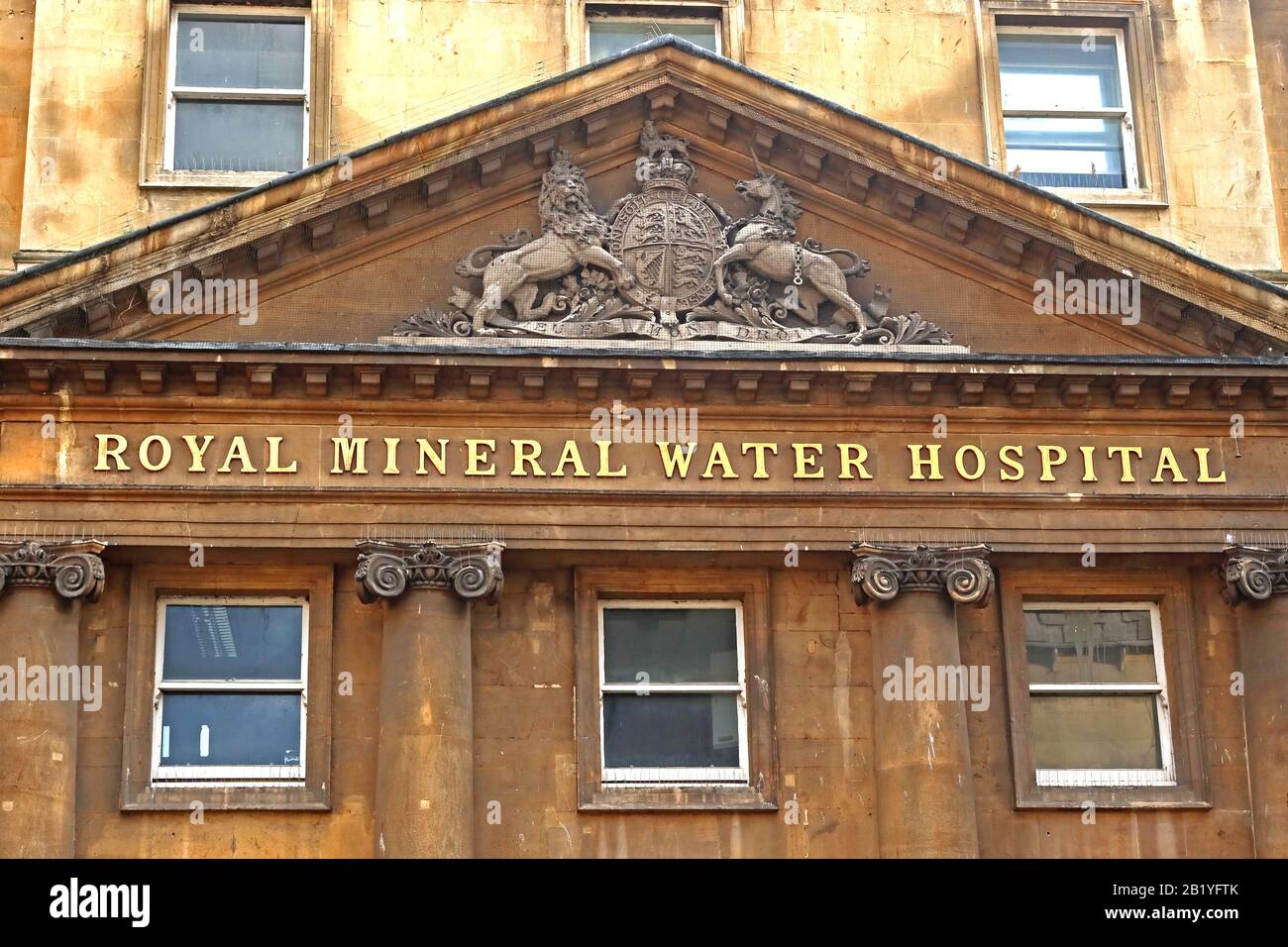Royal Mineral water Hospital, hospital originally for the poor,known locally as 'The Min', Gascoyne House Upper Borough Walls, Bath, Somerset, BA1

Image details
Contributor:
Tony Smith / Alamy Stock PhotoImage ID:
2B1YFTKFile size:
57.1 MB (2.9 MB Compressed download)Releases:
Model - no | Property - noDo I need a release?Dimensions:
5472 x 3648 px | 46.3 x 30.9 cm | 18.2 x 12.2 inches | 300dpiDate taken:
20 February 2020Location:
Gascoyne House Upper Borough Walls, Bath, Somerset, England, UK, BA1More information:
The Royal National Hospital for Rheumatic Diseases is a small, specialist NHS hospital on the Royal United Hospital site in the northwestern outskirts of Bath, England. The hospital was founded in 1738 as a general hospital for the poor in the city centre, where the frontage of its building still reads Royal Mineral Water Hospital. Thus it is known locally as "The Mineral Hospital" or "The Min". The hospital moved to a new building at the RUH site in 2019. From the 16th century the needs of the "deserving poor" who came to take the healing waters of the Roman Baths were recognised and an act of 1597 gave them the right to free use of the waters. This attracted beggars and, although the act was repealed in 1714, large numbers of people were still attracted to the city and St John's Hospital was only accessible to local residents. Plans were suggested for a hospital to receive them in 1716 with supporters which included Lady Elizabeth Hastings, Henry Hoare, Joseph Jekyll, William Oliver and Beau Nash. The hospital was founded in 1738 as The Mineral Water Hospital. It provided care for the impoverished sick who were attracted to Bath because of the supposed healing properties of the mineral water from the spa. The original building, which was designed by John Wood the Elder, was built with Bath stone donated by Ralph Allen and completed in 1742. It was later enlarged, firstly in 1793 by the addition of an attic storey and later in 1860 by a second building erected on the west side of the earlier edifice. There is a fine pediment, in Bath stone, on the 1860 building depicting the parable of the Good Samaritan. The building was classified as Grade II* listed in 1972. In 1993, the hospital became an NHS Foundation Trust, specialising in rheumatic disease and rehabilitation, which received a three-star rating in 2005. The hospital had a large brain injury rehabilitation service with separate units for adults, adolescents and children; this service closed in March 2013